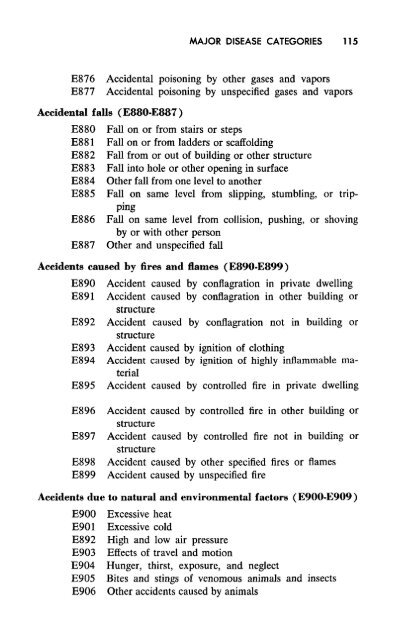DSM+II+1968
DSM+II+1968
DSM+II+1968
Create successful ePaper yourself
Turn your PDF publications into a flip-book with our unique Google optimized e-Paper software.
50 MENTAL DISORDERS<br />
treatment than Transient situational disturbances (q.v.) but less so than<br />
Psychoses, Neuroses, and Personality disorders (q.v.). This intermediate<br />
stability is attributed to the greater fluidity of all behavior at this age.<br />
Characteristic manifestations include such symptoms as overactivity,<br />
inattentiveness, shyness, feeling of rejection, over-aggressiveness, timidity,<br />
and delinquency.<br />
308.0* Hyperkinetic reaction of childhood (or adolescence)*<br />
This disorder is characterized by overactivity, restlessness, distractibility,<br />
and short attention span, especially in young children; the<br />
behavior usually diminishes in adolescence.<br />
If this behavior is caused by organic brain damage, it should be<br />
diagnosed under the appropriate non-psychotic organic brain syndrome<br />
(q.v.).<br />
308.1* Withdrawing reaction of childhood (or adolescence)*<br />
This disorder is characterized by seclusiveness, detachment, sensitivity,<br />
shyness, timidity, and general inability to form close interpersonal<br />
relationships. This diagnosis should be reserved for those<br />
who cannot be classified as having Schizophrenia (q.v.) and whose<br />
tendencies toward withdrawal have not yet stabilized enough to<br />
justify the diagnosis of Schizoid personality (q.v.).<br />
308.2* Overanxious reaction of childhood (or adolescence)*<br />
This disorder is characterized by chronic anxiety, excessive and<br />
unrealistic fears, sleeplessness, nightmares, and exaggerated autonomic<br />
responses. The patient tends to be immature, self-conscious, grossly<br />
lacking in self-confidence, conforming, inhibited, dutiful, approvalseeking,<br />
and apprehensive in new situations and unfamiliar surroundings.<br />
It is to be distinguished from Neuroses (q.v.).<br />
308.3* Runaway reaction of childhood (or adolescence)*<br />
Individuals with this disorder characteristically escape from threatening<br />
situations by running away from home for a day or more without<br />
permission. Typically they are immature and timid, and feel rejected<br />
at home, inadequate, and friendless. They often steal furtively.<br />
308.4* Unsocialized aggressive reaction of childhood (or adolescence<br />
) *<br />
This disorder is characterized by overt or covert hostile disobedience,<br />
quarrelsomeness, physical and verbal aggressiveness, vengefulness,<br />
and destructiveness. Temper tantrums, solitary stealing, lying, and


